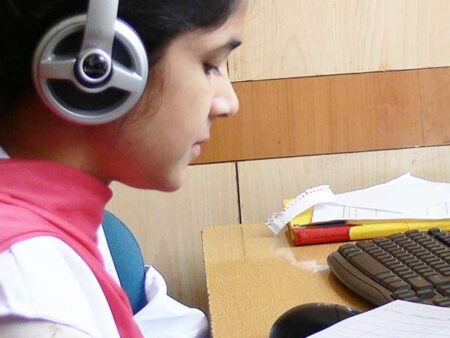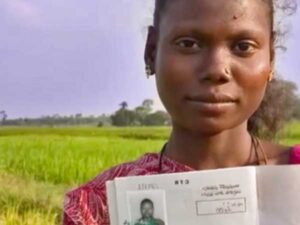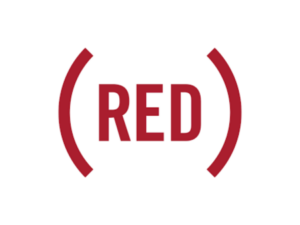World Health Partners provides access to healthcare, education, and other services to fill the healthcare gap in low-resource communities in India and Kenya. A driving focus is how to reach underserved people at scale.
Gopi Gopalakrishnan of World Health Partners spoke with Catherine Edwards on February 15, 2023. Click here to read the full interview with insights highlighted.
Catherine Edwards: Could you please introduce yourself and describe the problem that your work addresses and how you address that problem.
Gopi Gopalakrishnan: My name is Gopi Gopalakrishnan and I’m the president of a nonprofit organization called World Health Partners. I’m based in New Delhi, India. We used to work in India and in Kenya, but Kenya after the COVID epidemic is now on suspension. So we are largely in India.
We have a couple of things we focus on. How to deliver services to communities, which are sort of beyond the pale, living in rural and interior areas, especially in the poorer states of India and also in Kenya. Even when we worked in Kenya, we went to the poorest parts of Kenya. How do we leverage resources which are already there? Admittedly those resources are often quite meager, but they are there and they also have a kind of an empathetic connection with the community because the community has been using those resources. So why not leverage those and bring value to those resources with management systems and with technology.
What has happened in the last 10, 15 years is the rapid spread of digital technology, rated as cell phones being available in every corner of the world now. And how do we use this as an opportunity? How do you use it as a platform to do things, which were not possible earlier, because you didn’t have a way of reaching out to those communities unless you physically went there? Now there is an apparent opportunity to fill some gaps. The gaps are fairly obvious.
For instance, in the earlier part of the work, doctors don’t want to go and live in interior areas, in rural areas, understandably so, because the infrastructure, the social, the physical, the material infrastructure is so weak. If the doctor has children who have to go to school, there are no good schools available nearby and therefore, I don’t think you can blame them. Since the end of the Second World War, attempts have been made to relocate such doctors to rural areas, and that has not been a good experience because even though they may be there, the government would be paying the salaries and various other costs, they often were not available there and absenteeism was very high. But we didn’t have any other choice.
Now it’s possible to get a doctor sitting in a city or in any corner of the world to treat a patient, at least primary health, things that need simple care. And that’s exactly what we did in the first phase of our program where the doctors in larger towns and cities of India or in Kenya would be providing primary health care to communities who are in the interior. And we created close to 14,000 centers where people could walk in, because the doctor also needs some basic parameters such as blood pressure, temperature, pulse, whatever normally would be required for the doctor to make a diagnosis or at least an educated guess about what’s wrong with the patient. That had to be developed and that’s exactly what we did.
We started at a time when the connectivity was so dismal. We were lucky if we had 64 Kbps, if you’re familiar with these terms. 64 Kbps is as bad as it can get. It’s the 2G connectivity. And that is a promised connectivity with the companies, we would be lucky if you got about 20 or 25 Kbps. It was a high degree of compression with which we could do the consultation and we would celebrate whenever a consultation was completed, it was a relief because often they would drop and create all kinds of problems.
But now the integration has changed tremendously after the 3G, and the 4G, and now 5G expansion. We are now looking at not only getting things done in a proper way, but also getting ready to do things that were impossible to do earlier. So in the area of healthcare, we could even envision a situation where surgeries can happen. We’re not talking about the immediate future, but in the future surgeons sitting in a city can operate on a patient who may be in a village because of robotics and stuff. So that’s the future.
Catherine Edwards: What is different or distinctive about your approach to the problem compared to maybe things that had been tried previously?
Gopi Gopalakrishnan: We were among the first to try, so that was a problem. We had to cross the river by feeling the pebbles, as they say, completely uncharted waters. And we made mistakes, a lot of mistakes. We could fortunately go back and correct them. We also had a donor who was quite tolerant of mistakes. Initially it was the Buffett Foundation and the Gates Foundation, some of the big names were there because they were also pretty excited about what we are going to do.
The problem is not only how do you reach these communities, but how do you reach these communities at scale? Because scale for us is very crucial. We would not take up anything unless there is a potential to go to scale with that approach, with that strategy. Very often the work gets done on a very, very limited small scale with high management intensity and better access or more frequent access. But that is not replicable in a country like India, at 1.4 billion population. The state we were working in had a population of 120 million, in the state Bihar, which is the poorest state of India.
Catherine Edwards: I’m wondering what you learned about scalability and any insights you have on how to deal with that challenge.
Gopi Gopalakrishnan: Let me try to explain scaling in the way it processes through my mind. There is a very well-known foundation in India, very well-meaning and well-endowed, that invites applications from students from the poorest families, and out of those students the foundation selects 100 students. So normally about 200,000 students apply and a 100 get selected. Wonderful. Because those 100 are the brightest and they would get a free education, free uniforms, free boarding, free lodging, everything is paid for till they reach college. It’s wonderful. Very appreciated.
But that’s not what we would do. For the simple reason, we are more interested in the 199,900 students who have not been selected. And out of those 199,900 there is that 199,900th student who probably is a runt of the pack, who doesn’t have any skills, may not be even very bright, maybe having some health issues, whatever it is. How do you give survivability to that child? That’s what we are worried about. To scale means you reach the last person standing, or the last child standing, how do we do that? Everything that you do will have to keep an eye on, can it really be able to attract such a constituency in which we will be able to reach out to the most desperate, the most needy persons, and how do we do that?
Catherine Edwards: And what did you find is the way to do that?
Gopi Gopalakrishnan: To understand what resources currently exist, vis-a-vis even that last standing child. And can we leverage those resources and bring in technology and other things. Sometimes in the education process, about which we will talk, the whole idea there is to also cross subsidize. We could try to raise resources from one segment and make the system efficient enough so that there are savings available and use those resources to cross subsidize the most desperate. Use modern day financial instruments.
There are a lot of people who want to help out. The only thing is they don’t want to get stuck in it forever, understandably. We can raise the resources including through a bank loan or anything. The challenge is how do you sustain it? How do you meet the recurring costs? No donor wants to touch recurring costs, but that is a bottomless pit. If you have to go that way, it’s going to be a problem.
When you go to scale you have to first figure out, “All right, how am I going to raise the resources to meet the recurring salaries, and the infrastructure, like the servers, and the management team, and all those things.” How are you going to pay for them? And how are you going to pay for them in a way which is good enough for those guys to survive? We don’t want volunteers, we will take volunteers only when they come for 3 or 6 months. For the regular operations, we use paid employees because that’s the only way we can then demand work, and we can also expect them to stay on because those families are dependent on the income they get from the organization.
Catherine Edwards: How do you measure the success in your work?
Gopi Gopalakrishnan: In our case, everything is quantifiable. The number of patients who are treated, the number of TB cases we have treated, number of TB patients we have identified, number of children within those pediatric TB cases if you’re taking TB as an instance. Or if you’re taking mental health, which is also an area where we work in, there is enough data available on the extent of mental health issues in the community, and what proportion of it are we addressing. Ours is a numbers game. If you want to scale, the first thing you’ll have to understand is the kind of numbers underlying it.
In fact the purpose of the alphabet is to understand the narrative. Like what Aristotle said 2000 years ago. We can understand if you know the alphabet. But the purpose of numeric is to understand scale. When you go to scale, everything gets converted to numbers. And that’s not a good thing because people say how can you convert people into numbers? But that’s how it happens. And so you need to manage because when you go to scale, it’s not going to be one-on-one, it is going to be a tier, it’s going to be a hierarchy. And therefore how do you work through a hierarchy? There are various strategies, you hope for the best but plan for the worst. And set up metrics within the system so that you’re alerted when something goes wrong and correct them. The remedial part, as an integral part of management, is also very good.
Catherine Edwards: Do you have evidence that you are making progress? Maybe some examples of those numbers or an example that shows the impact your work has?
Gopi Gopalakrishnan: In our 10, 11 years of experience, we have treated about 20 of about 28-point some million people. The numbers are fairly large. We are one of the biggest creators in the area of TB care, tuberculosis. Mental health, we are not very big, but we are big among people who work in mental health because there are very few people who are working there. The issues are much larger than what we can cope with. We have been doing it, but it’s very difficult to monetize mental health. Very poor families are not going to pay for people who will have to receive treatment. Mental health should be handled largely by the government through use of the health budget. But we do play a sizable role.
Mental health, we would be dealing with about 150,000 people a year. It is okay, but it’s nowhere near what should be done. We have a long way to go on it. It’s also new to us because we didn’t know anything about mental health until TB happened. We consequently realized that there is a huge mental health issue because people who contract TB and their families go through hell, and therefore we had to step in and correct it. So we got pushed into mental health not because it was planned that way, but because it happened as a sort of corollary to our interventions in the area of TB and COVID. When you were asking about numbers, COVID, we responded within five days of India declaring lockdowns because we already had the technology.
We repurposed the technologies, worked 24/7 and within five days we mounted our intervention in two of the largest states. One was Bihar the poorest state, the other one is a state called Andhra Pradesh, south India. We had something like 2000 staffers – doctors, paramedics, and assistants supplied by the doctors – because they were also locked up. All those staff were also sitting at home. We very quickly created a response by which a consultative process could happen between a doctor and patients, or especially people who were exhibiting symptoms of COVID, so that we could isolate those people and ask for treatment. It’s more of a screening rather than treatment. But at least we could [identify] those people exhibiting symptoms and refer them to specialized units set up particularly for COVID. In a matter of about 40 days we handled about 200,000 cases.
Catherine Edwards: If somebody wanted to replicate your work in another context or a similar context, what advice would you give them? What insights have you learned from going on that journey that someone else would benefit from knowing?
Gopi Gopalakrishnan: Number one, understand the numbers and what does it really involve? Second, focus not so much on the setting up cost, but on the sustainable cost. By bringing in elements which will give you the ability to raise resources that will meet recurring costs. That’s the priority. Because almost everyone focuses on setting it up and capital cost donors step in and help. That’s good. The moment the donor support is over your project is over. And if you go to scale, that is the worst thing that you can do.
You start a project, working on scale, because a donor is standing behind you, and then the donor, after three years, five years, whatever it is, there comes the time when the donor says, “No, I can’t support you anymore.” Normally 90%, 99% of the projects close down and leave the community in a shape that is far worse than how it started, because they’ve got used to a better quality of life. And suddenly you say, “Sorry, we are going home because we don’t have any money.” That is the worst thing they can do. It’s better not to do it.
There are two things there. One is what you want to do. The second is how you want to get there. One is, what is your objective? And second, how are you going to reach the objective? What you’re going to do is reasonably easy to explain because there is enough experience, there are enough benchmarks available internationally. How do you want to reach it calls for a deep understanding, especially when you want to reach those communities who are living in the interiors, bad infrastructure, high poverty areas.
You have to have an understanding of what the psychographics would be. What is their mindset? What are the things which will jimmy up the works for you? Because you want to do it in a certain way, but even more important is to know how others will see what you want to do or how others’ thinking will affect what you want to do. It could be private sector competition, it can be kind of lethargy or the inability to accept new concepts. All those things come into play. So you’ll have to factor those in. There will have to be an intellectual understanding of the processes rather than just the objective.
Catherine Edwards: Could you give an example of something that didn’t work or a mistake that you learnt a valuable lesson from?
Gopi Gopalakrishnan: What hasn’t worked, first of all, we thought when the city doctor is able to provide care to rural communities, they will step in and absorb their extra cost. Because those bells and whistles [you have to] offer a qualified doctor from a city is going to push up the cost they are currently incurring when they get their services from the informal sector. But for primary health that doesn’t happen. People don’t think primary health treatment warrants a higher payment. They’re pretty happy with whatever they’re getting unless things get really serious.
Whereas when it comes to things like TB, that is not a problem because the informal providers don’t have a clue how to treat TB. And it is also long-drawn-out. Between six months and two years depending on what kind of TB the patient has got. So their response is much better. People are willing to travel longer distances, et cetera. So that’s one lesson. If the focus is on primary health, we have to keep this in consideration because this is a major factor for the ability to sustain the project the way we conceived it. Technically we made those mistakes, but those things have changed now. So I don’t think that they’re really relevant because a significant part of our efforts earlier were to fix the technology. But now all that it’s kind of [in the past].
Catherine Edwards: Looking to the future, perhaps over the next five years, how do you see that the work is going to evolve?
Gopi Gopalakrishnan: People are willing to pay, but they’re not willing to pay enough that would help us meet all the costs. So then we would be primarily dependent on donor funds, which we don’t want to get into. Because the moment a donor decides to say, “All right we have paid you long enough. We want to end it.” Then the project is on very, very shaky ground.
So we are now expanding the base to cover [costs]. And the government has also, in appreciation of the work we have done, extended our mandate for our tax-exempt status, because it’s World Health Partners, that’s the name of the organization, to cover education and livelihoods. And this happened just about six months ago. And so flowing from there, we are expanding. The same logic, like the way good doctors are not available in rural areas, good quality teachers are not available in rural areas. And those children will never have a chance of being able to compete with kids who come out of some of the best schools in the cities.
If you look at all those Indians who are doing very well outside India, the top-notch, including your prime minister, I guess. All those CEOs of many multinationals who are all Indians, they’re all from schools which are city based. And they have been able to get the best out of it. But there is the other side of it, which is those rural schools, informal schools, like the way you have informal healthcare providers, you have informal schools.
Studies have shown, including one of the largest studies that happened early in 2000s, that teacher quality is the most important determinant of educational outcomes. Where the child will get to in life is dependent on the quality of teachers that they’re exposed to. So how do we do that? We are therefore re-engineering our solution, which we used in healthcare, connecting our doctor with the patient in rural areas, to a situation where [students can connect to] a teacher in any part of the country technically.
The problem is these teachers are very expensive. The cost is up to about $800, $900 per month in these best schools where you get good quality teachers. Whereas the children who come to those rural schools, they can’t charge more than a dollar, a dollar and a half at best. The only way we can do that [cover the costs] is to expand the base. And this is the major weakness of what we are attempting to do.
These informal schools are using some local guy, a barely literate fellow who is coming and teaching. Teaching is quote-unquote. But everything is by rote then, there’s no proper way of learning. We want to bring in those teachers, but how do you make it affordable to those families from where these children come? The only way we can do it is to expand the base, so that our technology will allow one teacher to connect with many schools simultaneously. So we are able to raise the resources by which we can afford to pay for the teacher. It’s all digital in real time, the teacher and the students can see each other, can talk to each other, the teacher can use a whiteboard, can use videos, and pictures and graphics, and whatever it is, so that the various tools that are available will be useful.
But there are two major deficiencies. One is that the teacher is physically not present in the classroom. So that breaks that relationship between a teacher and the pupil. The second one is, it’s also going to be a fairly large base. So in a typical school, a classroom would have maybe 30, 40 students, whereas in this case you probably are looking at 500 to 1,000 children. So that is what we have to cope with. But we still think it is worth it because there is already that local fellow who’s acting as a teacher now, he or she will be trained to provide empathetic support to the children. In any case the children will need some adult supervision. So that person will have to be there anyway. But train the person in a way so that person can provide the care and fill in for the regular teacher who is basically not available. This is what we’re setting out to do and it’ll start from the next academic year, which in India starts in April.
Catherine Edwards: What do you think is needed from other actors or other partners to help make changes at the system level?
Gopi Gopalakrishnan: The national education policy, which was announced a couple of years ago, is very, very, very forward-looking, in complete contrast to the earlier versions of it. Which paid almost total attention to tertiary care, like your engineering colleges and medical colleges, and completely ignored the early education, the primary school education. The policy framework is there, but the operational ability is what we have to figure out.
If there are people who can help us with technological glitches and how to handle them. We have our own in-house team, which is quite an expert, but anyone else who can provide some added support will be very nice. Of course money, but not for recurring expenses. It’s money for equipping classrooms. A school of six classes, we are starting from kindergarten to grade five, so there are six classes. [We need] to equip a school with large TV screens, computers, internet, and uninterrupted power supply, et cetera. For a school, it will cost about $5,000. For a school, for six classes, that’s roughly about $850 per classroom.
If there are people who can step in and absorb that. Because if those children can’t pay that one dollar, one and a half dollars, we will not even attempt it. We know once we start and the donor support gets over, we’ll not be able to continue. So we don’t want to start that. To equip the school, that’s a large amount of money for these informal schools. $5,000 is a large amount of money for these informal schools.
We need anyone who can provide us with technical help. If we can create a think tank, which can also meet once in a while to discuss the lessons, that would be wonderful as part of the larger one. And the third one is, anyone who’s willing to sponsor classrooms. Per a school, it costs $5,000. Or per class, it costs about $900. So if anyone is willing, it’s a one time cost. We are not looking for people who will sustain because we don’t want to go that way at all.
Catherine Edwards: You’re working on such an important, interesting project, is there anything you felt like we didn’t get a chance to cover that you think is important to add?
Gopi Gopalakrishnan: Once the school is involved, the schools normally function from 8:30 the morning till about 1:30 [in the afternoon]. Once school classes are over, then this entire investment is idle. It’s sitting idle, because you have the structure, however bad the structure is, often it’s all ramshackle buildings, et cetera. But you have the equipment deployed and all those things there. We will be using those in the after school hours to skill people, skill adults, living in the neighborhood. Because all these schools are in poorer pockets of the community. So the people that are around are also very poor because those children come from those needs.
We’ll be using, extending, and optimizing these resources to get into skilling and not leave them there. Give them skills and give them the raw materials to use those skills, take those products and market them and sell them and pass it back to them. So it is as much a livelihood. If you remember I mentioned earlier, our clearance from the government is both for education and for livelihoods. So how do you combine the two? And this is of interest to the schools also because whatever it is, these informal schools are run by rural entrepreneurs, so here is an opportunity for no investments whatsoever, they’re able to harness the resources being set up for education to extend it beyond education to skillings, which is also kind of education, and then add some financial component to the families so that they can have a better quality.
Click here to read the full interview with insights highlighted.
Catherine Edwards is a journalist and content strategist based in the UK, having also lived and worked in Germany, Italy, Sweden and Austria. She supports newsrooms and mission-driven organisations with content strategy, audience development and constructive journalism.
* This interview has been edited and condensed.
Read other insights from social innovations in healthcare.







